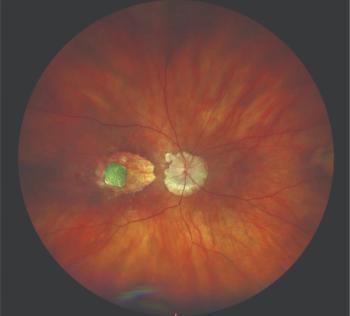
Military review supports laser procedure safety
Refractive surgery is a safe method for correcting refractive error, according to a retrospective review of all cases of the surgery performed over a 7-year period at a U.S. military laser refractive surgery center.
San Antonio-Refractive surgery is a safe method for correcting refractive error, according to a retrospective review of all cases of the surgery performed over a 7-year period at a U.S. military laser refractive surgery center.
The review, presented by Major Vashuda A. Panday, MD, identified a very low rate of postoperative microbial keratitis that compares very favorably with the infection rate reported in other series.
Between January 2005 and December 2011, a total of 24,446 refractive surgery procedures were performed at the Joint Warfighter Refractive Surgery Center, Wilford Hall Medical Center, San Antonio, TX. However, only a single case of microbial keratitis was identified for an incidence of 0.0041%.
“Most published information on microbial keratitis after refractive surgery is anecdotal, and the true incidence is unknown,” said Dr. Panday, cornea/refractive surgeon at the center. “However, a paper published in 2004 reported the rate varied between 0.02% and 1.5%, and findings from surveys conducted by the ASCRS in 2001, 2004, and 2008 indicate rates ranging from 0.034% to 0.091%.
“This data and our study indicate that by in large, refractive surgery is a safe means of correcting refractive error-however, the rate of microbial keratitis at our center appears to be much lower than in other reports, and we have a few ideas as to why,” she said.
The Joint Warfighter patient population and the care they receive are unique in several respects, Dr. Panday said.
All of the patients are active-duty military personnel, and as an extension of that, are generally young and healthy without any significant comorbidities. They are also managed with highly regimented preoperative and postoperative protocols that include a mandatory 5- to 7-day period of postoperative convalescent leave when they must stay out of work.
Furthermore, the fact that there is no cost to the patient for the surgery or any medications likely contributes to compliance, because follow-up failure can lead to punitive action.
In addition, the center has dedicated eye technicians who work only in refractive surgery.
“It is probably a combination of these factors that helps us to keep our incidence of microbial keratitis so low,” said Dr. Panday.
However, she acknowledged that the review may not have captured all cases of infection since the center operates on both locally based and non-local military personnel, and relies on getting outcome reports on the latter patients from the active-duty optometrists responsible for their co-management.
For more articles in this issue of Ophthalmology Times eReport, click
To receive weekly clinical news and updates in ophthalmology,
Newsletter
Don’t miss out—get Ophthalmology Times updates on the latest clinical advancements and expert interviews, straight to your inbox.





